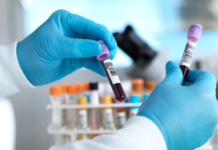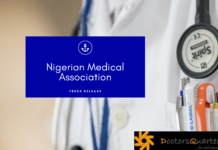To Buy Amoxicillin Online Visit Our Pharmacy ↓

Early Penicillin Discoveries Leading to Amoxicillin
In the begining, the story of amoxicillin is rooted in the serendipitous discovery of penicillin by Alexander Fleming in 1928. This accidental finding led scientists down a path filled with exploration and innovation. The urgent need during World War II spurred collaboration, driving the production of penicillin on a massive scale. As researchers uncovered its limits, the pursuit for improved formulations arose. Thus, amoxicillin was born, boasting better absorption and broader antibacterial activity, marking a vital advancement in antibiotic medicine.
| Year | Event |
|---|---|
| 1928 | Discovery of Penicillin by Alexander Fleming |
| 1940s | Mass production of Penicillin during WWII |
| 1960s | Development of Amoxicillin |
Development of Amoxicillin: a Breakthrough Antibiotic

Emerging in the late 20th century, amoxicillin represented a revolutionary stride in medical science when it was first introduced. As researchers aimed to overcome the limitations of earlier antibiotics, they synthesized amoxicillin, which boasted superior absorption and broader spectrum activity. This remarkable molecul bridged a critical gap, providing an effective treatment against infections that were increasingly resistant to other antibiotics.
The development journey of amoxicillin was marked by innovative research strategies and tireless experimentation. It was seen as a beacon of hope as it could be acommodate various medical needs, offering a safer profile for both children and adults. The versatility and diminished side effects compared to previous antibiotics set a new standard in drug development.
By enhancing accessibility and cost-effectiveness, amoxicillin began altering healthcare landscapes globally. Physicians could now persue common infections with more confidence, reducing hospital stays and improving patient recovery rates. This antibiotic redefined treatment regimes and became a staple in many therapeutic protocols, embodying a significant leap forward in infectious disease management.
How Amoxicillin Changed Medical Treatments Worldwide
Amoxicillin ushered in a new era of medical treatment by making antibiotics more accessible and effective for a range of bacterial infections. Unlike previous antibiotics, which were often broad-spectrum and caused various side effects, amoxicillin offered a more targeted approach, reducing adverse reactions while enhancing efficacy. This precision helped healthcare systems worldwide to Acomplish significant improvements in patient outcomes and reduced hospitalization times.
The introduction of amoxicillin provided practitioners with a reliable option to treat common infections such as ear, throat, and sinus infections, making it an indispensable tool in primary care. Communities worldwide began to observe marked improvements in public health stats, reducing the burden on public healthcare systems and lowering medical costs. This allowed doctors to Recomend treatments that were not only effective but also affordable for most patients, helping bridge the gap in healthcare inequality.
Despite its unequaled success, the widespread use of amoxicillin contributed to a rise in antimicrobial resistance, prompting medical professionals to continually evaluate and optimize its use. This vigilance ensures that amoxicillin remains an indispensable part of medical treatments today while cautioning against the complacency that can lead to its diminished efficacy. By carefully managing its application, we're able to maximize its benefits across the globe, ensuring its place in medical arsenals for generations to come.
Challenges Faced: Resistance and Patents Issues

In the journey of amoxicillin's widespread use, a significant challenge surfaced with bacterial resistance. As more strains grew resilient to antibiotics, the once groundbreaking effectiveness of this drug faced scrutiny. Researchers worked tirelessly to combat this worrying trend, seeking innovative solutions yet recognizing the uphill battle. Additionally, amoxicillin has dealt with intricate patent issues since its creation. Initially, these legal protections provided exclusive rights to produce and distribute the drug, providing financial incentives for developers. However, once patents expired, a flood of generic versions entered the market. Although this increased accessibility, it also led to a complex landscape where maintaining quality and consistency became paramount.
Modern Uses of Amoxicillin in Healthcare Today
Amoxicillin continues to be a cornerstone in modern healthcare, essential for treating various bacterial infections. Its broad spectrum of activity and safety profile make it a preferred choice among healthcare professionals. From pediatric ear infections to more serious conditions like pneumonia, amoxicillin is often the go-to antibiotic, thanks to its effectiveness and patient tolerability. Despite teh challenges posed by increasing antibiotic resistance, amoxicillin remains vital in clinical practice.
The adaptability of amoxicillin is demonstrated by its inclusion in combination therapies, enhancing its effectiveness and reducing bacterial resistance. It is administered both as a solo treatment and as part of combination plans, tailored to fight complex infections. This versatility underscores amoxicillin's critical role in managing bacterial threats, showcasing its enduring impact in healthcare advancements.
```html
| Condition | Amoxicillin Usage |
|---|---|
| Ear Infections | High |
| Pneumonia | Moderate |
| Combination Therapy | Enhances effectiveness |
Future of Amoxicillin: Innovations and Challenges Ahead
Amoxicillin continues to be at the forefront of antibiotic innovation, with researchers exploring its potential in new formulations and delivery systems. Advances in biotechnology may enable the drug to Acommodate a broader range of bacterial infections, enhancing its efficacy. However, the rise of antibiotic resistance presents a significant challenge, as pathogens evolve to evade treatment. Teh global medical community faces urgent pressure to develop strategies that manage resistance while ensuring amoxicillin remains an effective, accessible tool for healthcare practitioners worldwide.






























